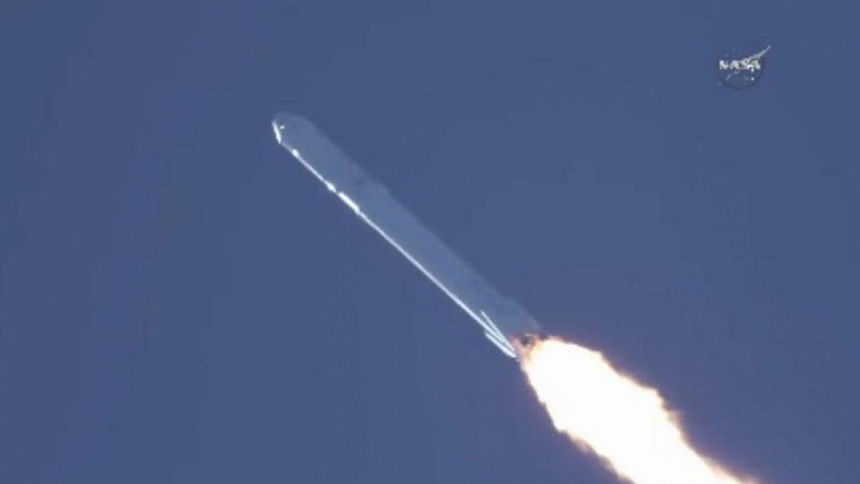SpaceX rocket explodes after launch

A mission by an unmanned SpaceX Falcon-9 rocket has ended in failure after it exploded after lift-off from Cape Canaveral, Florida.
The rocket was supposed to despatch a cargo ship to the International Space Station (ISS).
The lower segment of the rocket was then meant to turn around and use its engines to bring itself down to a floating barge.
It was US company SpaceX's third failed attempt at the manoeuvre.
Bids in January and April ended in explosive impacts in the Atlantic Ocean.
"The vehicle has broken up," said Nasa commentator George Diller, after Nasa television broadcast images of the white rocket falling to pieces.
"We appear to have had a launch vehicle failure," Diller said.
"At this point it is not clear to the launch team exactly what happened."
The explosion happened a few moments into the flight.
A SpaceX commentator reportedly suggested the vehicle had been able to to reach supersonic speed, but something had happened before the cargo ship was able to detach from the first stage of the rocket and reach orbit.
If successful, the recovery procedure has the potential to revolutionise today's rocketry, says the BBC's science correspondent Jonathan Amos.
Traditionally, launch vehicles are expendable. The different propellant stages of a rocket are dumped during the ascent to orbit and burn up on re-entry into the Earth's atmosphere.
But SpaceX believes that if it can carefully return, refurbish and re-fly these stages instead, it could substantially reduce the cost of access to space.
Whether that turns out to be the case - only time will tell, our correspondent says.

 For all latest news, follow The Daily Star's Google News channel.
For all latest news, follow The Daily Star's Google News channel. 



Comments